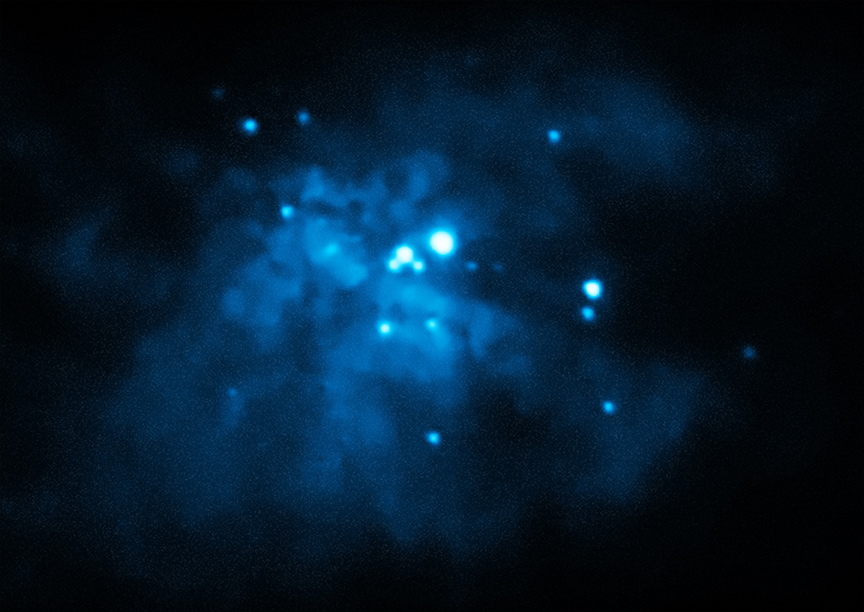
It's great that the Earth's atmosphere blocks harmful radiation from space, such as X-rays, from reaching the ground - we couldn't survive without it! But astronomers would like to study this radiation because it gives them useful information about objects in the Universe, such as stars and galaxies. So what can they do?
They launch some telescopes into space - to go beyond Earth's protective atmospheric shield. One of these telescopes, called the Chandra X-ray Observatory, is designed to detect X-ray radiation that has travelled across the Universe. The information that the telescope collects is then beamed down to astronomers on Earth to study and to create fantastic pictures, like the X-ray photo of galaxy M82 shown above.
Using the Chandra X-ray Observatory, astronomers recently made an incredible discovery: not just one, but two powerful objects at the center of a nearby galaxy (pictured below) that have so much material packed into a small region that not even light can escape their gravitational pull! These objects are called supermassive black holes. (To learn more about supermassive black holes, click here.)
The astronomers behind the new discovery were surprised by how close this galaxy is to our own galaxy, the Milky Way. "This galaxy was right under our noses," says astronomer Pepi Fabbiano. "It makes us wonder how many of these Black Hole pairs we've been missing".
Cool fact: With a whopping 14 meters (45 feet) in length, the NASA Chandra X-ray Observatory is the largest telescope ever launched into space!
Do you want to learn more about this topic?
Visit the Chandra field guide or send us your questions in an email: cxcpub@cfa.harvard.edu
In cooperation with Space Scoop: Bringing news from across the Universe to children all around the world. Universe Awareness and the Chandra X-ray Observatory
| Children & Online Privacy |




